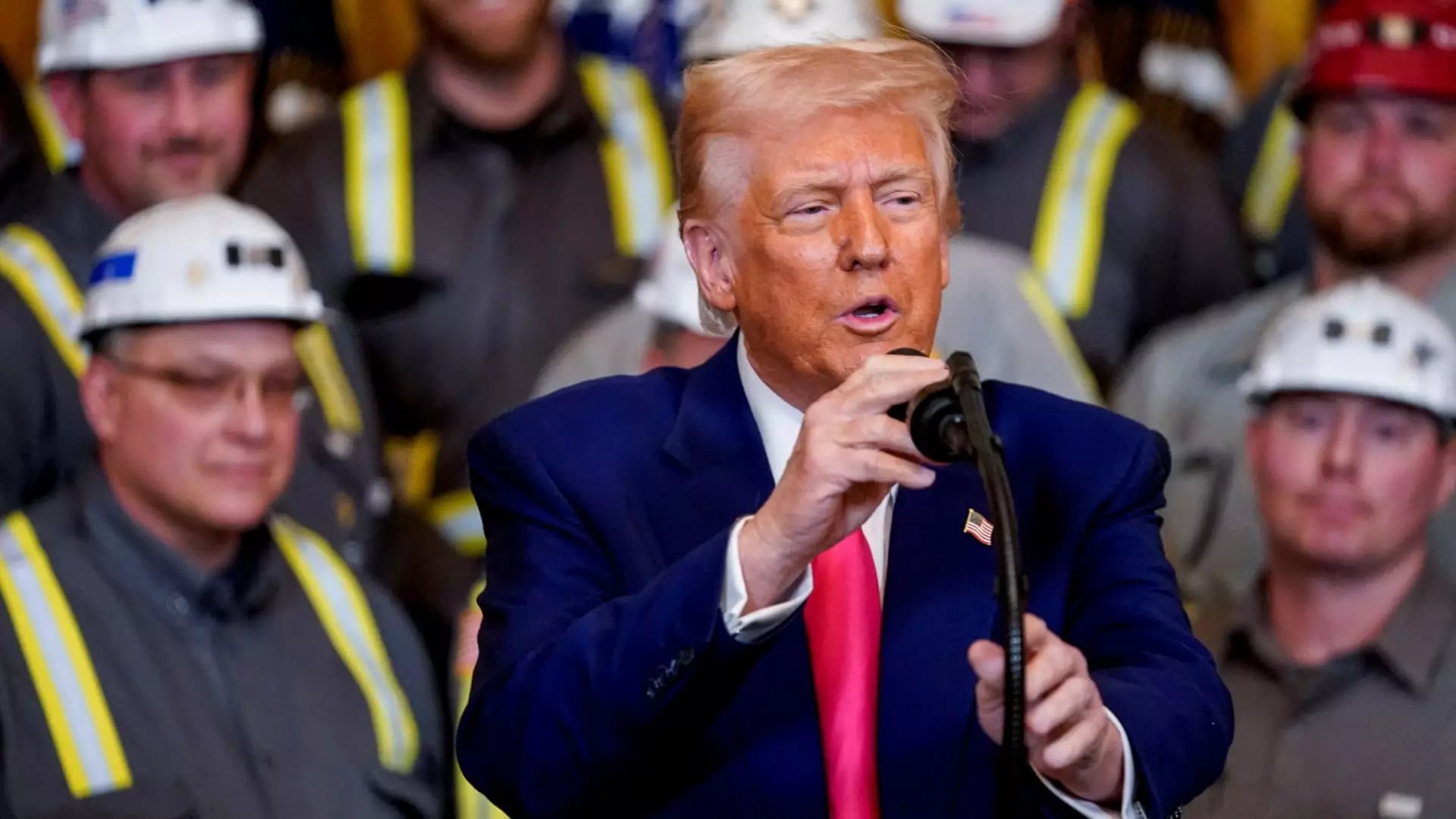The advocacy for coal as a “clean” energy source is not just misleading; it’s dangerously deceptive. President Donald Trump’s insistence on using coal to power AI data centers pushes an outdated narrative that privileges short-term economic benefits over long-term environmental sustainability. The rhetoric surrounding “good, clean coal” glosses over the stark reality that coal is the dirtiest mainstream fossil fuel available. It emits more carbon dioxide (CO2) per kilowatt hour than any other energy source, except oil. In an era dominated by climate change discourse, this approach prioritizes industrial nostalgia over pressing ecological concerns, creating a delusion that intertwining advanced technology with antiquated energy practices can offer a viable solution.
Trump’s administration heralds coal as critical to America’s energy future while failing to adequately address its legacy of environmental degradation. The idea that fossil fuels, particularly coal, could somehow fit into our energy landscape alongside significant advancements in renewable technologies like wind, solar, and nuclear power is not only misleading but fundamentally flawed. This perception pushes aside the technologic innovations that are essential to mitigating climate change in favor of a power source that has been in steep decline for decades.
Short-Sighted Economic Incentives
Trump’s push for a coal revival is a desperate maneuver to breathe life into an industry grappling under the weight of its own obsolescence. Data from the Energy Information Administration (EIA) indicates that coal accounted for only 16% of U.S. electricity production in 2023, a steep decline from 51% in 2001. The president’s plan encourages existing coal plants to ramp up production—striking a chord with industry leaders like Peabody Energy’s CEO, James Grech, who advocate for delaying coal plant retirements. While some miners might see this as a lifeline, it reflects a short-sighted approach that ignores the long-term ramifications of remaining overly dependent on fossil fuels.
Amidst the data-driven demands of the tech industry, which are increasingly tailored toward renewable sources, this coal-centric vision is akin to trying to fit a square peg in a round hole. It sounds good on paper—promoting economic growth in coal regions—but the complexities of energy needs in our technologically evolving society suggest this rhetoric lacks substantial grounding. The dependency on coal not only raises questions about its viability in a rapidly changing energy landscape but also risks endangering our climate commitments.
The Tech Industry’s Environmental Goals Conflict
Trump’s alliance with coal presents a complex quandary for tech giants, who have significantly invested in reducing their carbon footprints. Companies like Amazon and Nvidia are increasingly committed to sustainability, investing billions in renewable energy options. The dichotomy between their green aspirations and Trump’s coal agenda is palpable. While some industry executives acknowledge the necessity of thermal energy to meet short-term demands, they uniformly skirt the issue of coal, highlighting gas—a cleaner option—as preferred. This juxtaposition reveals the underlying tension between a hawkish energy policy and the ecological ethics embedded within the tech industry.
Kevin Miller from Amazon smartly pointed out that meeting the growing electricity demands – including the energy-intensive AI data centers – requires a multifaceted approach. However, what remains evident is that the majority of tech companies are looking elsewhere, specifically to natural gas and renewable energy sources. They cannot afford to align their reputations with an energy source that, despite political support, is increasingly seen as anachronistic and environmentally toxic.
Grid Reliability Versus Energy Revolution
One of the most pressing dilemmas is the looming threat of coal plant retirements threatening grid reliability, especially as electricity demand soars. The largest grid in the U.S., the PJM Interconnection, projects a 40% surge in demand by 2039. Faced with this challenge, the notion of relying on coal as a stopgap measure is contentious. Analysts argue that the situation calls for an acceleration of the energy transition rather than clinging to an outdated fuel source that has become more of a liability than an asset.
The reality is that coal is slowly being edged out by cleaner, more efficient alternatives. The impressive emissions reduction achievements over the past two decades are largely due to natural gas supplanting coal, which continues to highlight the futility of revamping coal’s role in the energy landscape. Energy executives and environmentalists alike agree: investing in coal could send us spiraling backward when the focus should unequivocally be on renewables.
A Call for Forward-Looking Energy Policies
The endorsement of coal by the Trump administration appears to be a strategic appeal to nostalgic coal mining constituencies rather than a rational energy policy. While this endeavor may momentarily benefit specific regions, it jeopardizes long-term sustainability and perpetuates a harmful cycle of reliance on fossil fuels. The urgency lies in rethinking our broader energy policies towards a future where renewable energy, innovation, and decarbonization are prioritized over outdated and environmentally damaging practices of the past.
What we need now is a comprehensive dialogue that champions sustainability and acknowledges the shifts within both the energy and tech sectors. By pursuing these new avenues, we can pave the way for a resilient, environmentally sound energy framework prepared to meet the demands of an electrified economy without hitching our future to an unsustainable past.


Leave a Reply